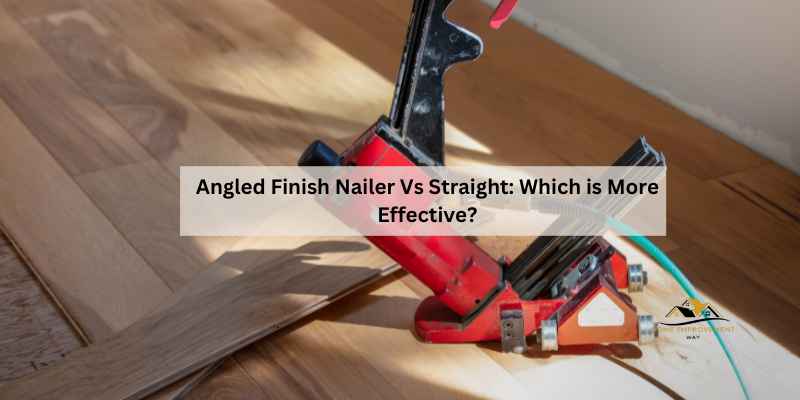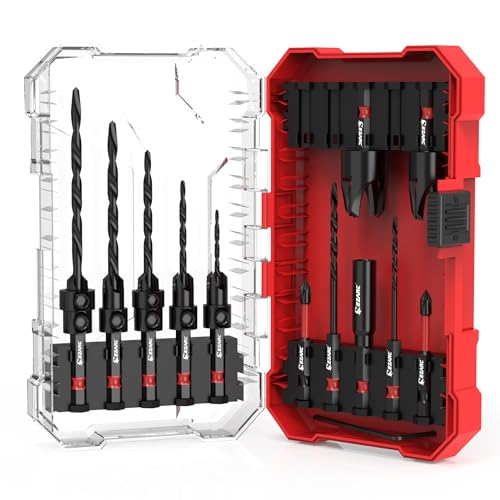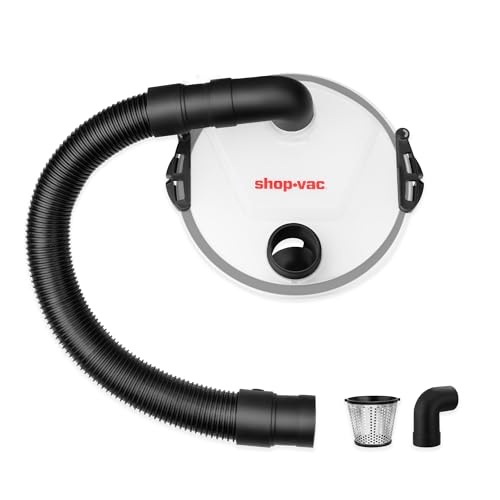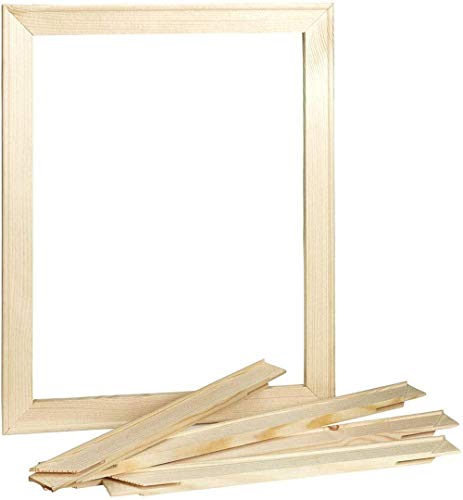Angled Finish Nailer Vs Straight: Which is More Effective?
When choosing between an angled finish nailer vs. A straight one, consider the flexibility and precision each provides. An angled finish nailer allows you to access tight corners and low spaces, making it essential for certain applications.
In contrast, a straight finish nailer is ideal for straightforward, traditional nailing tasks. Understanding the differences between these two types of nailers will help you determine which is best suited for your specific woodworking projects. Whether you prioritize maneuverability or simplicity in your nailing work, selecting the right tool can significantly impact the quality and efficiency of your carpentry endeavors.
Explore how each type of finish nailer can enhance your woodworking experience and elevate the final look of your projects.
Differences In Design
When it comes to nail guns, the design can have a significant impact on their functionality and versatility. Understanding the differences in design between angled finish nailers and straight nailers can help you make an informed decision for your nailing needs.
Angle Of Nails
One of the primary design differences between angled finish nailers and straight nailers is the angle at which the nails are fired. Angled finish nailers are designed to accommodate nails that are loaded at an angle to the tool’s body, typically around 20 degrees. This angled configuration allows for easier access to tight spaces and corners, making them ideal for intricate woodworking and trim installation.
Application Flexibility
Due to the angle at which nails are loaded and fired, angled finish nailers offer greater flexibility in various applications. They excel in tasks that require precision and maneuverability, such as installing crown molding, baseboards, and other trim work. On the other hand, straight finish nailers are better suited for straightforward applications where access to tight spaces is not a concern, such as general carpentry and framing.
Nail Head Type
Another aspect of the design divergence lies in the nail head type compatible with each nailer. Angled finish nailers are compatible with full round head nails, which offer superior holding strength and are commonly used in construction and heavy-duty carpentry. In contrast, straight finish nailers typically accommodate smaller, lighter gauge nails with a straight collation, making them suitable for delicate woodworking and finishing tasks.
Advantages And Disadvantages
- Allows for easy access to tight spaces
- Prevents tool from hitting the workpiece
- Enables firing nails into corners
- May be less stable when using on flat surfaces
- Limited nail capacity due to angled design
- Can be more expensive than straight finish nailers
- Provides better stability on flat surfaces
- Allows for higher nail capacity
- Generally more affordable than angled finish nailers
- Limited access to tight spaces
- May require more maneuvering to nail into corners
- Potential risk of hitting workpiece with the front of the tool
Applications
When it comes to the applications of angled finish nailers versus straight finish nailers, it’s important to understand the unique benefits of each. Both types of nailers are valuable tools for a variety of projects, but they excel in different areas.
Best Uses For Angled Finish Nailer
An angled finish nailer is a versatile tool that offers several advantages over its straight counterpart. Some of the best uses for an angled finish nailer include:
- Fastening hardwoods and other dense wood products such as MDF.
- Installing heavy or thick moulding, such as crown moulding, baseboards, window and door casing, etc.
- Installing wood paneling.
- Building furniture.
- Making cabinets.
- Assembling stairs.
The angled design of this nailer allows for greater maneuverability and access to tight corners or close-to-floor areas. It prevents the front of the tool from hitting the workpiece and enables nails to be fired at optimal angles, making it invaluable for these specific applications.
Best Uses For Straight Finish Nailer
A straight finish nailer also has its own set of advantages and is commonly used in a variety of projects. Some of the best uses for a straight finish nailer include:
- Trim work.
- Attaching decorative molding.
- Securing baseboards.
- Affixing paneling.
- Small woodworking projects or attaching thin pieces of wood together, such as building a birdhouse.
- Fastening light picture frames to the wall.
- Temporarily joining items together.
The straight finish nailer is ideal for projects where a more straightforward approach is required. It provides a strong and secure hold, making it perfect for applications that don’t necessarily require the flexibility and maneuverability of an angled nailer.
In conclusion, the choice between an angled finish nailer and a straight finish nailer depends on the specific project and its requirements. Understanding the best uses for each type of nailer will help you make an informed decision and achieve the best results for your woodworking or construction projects.
User Perspectives
When choosing between an angled finish nailer and a straight one, consider the advantages of each. An angled finish nailer allows for tighter angles and easier access to tight corners, while a straight finish nailer is suitable for general tasks.
Choose the option that best fits your project requirements and desired results.
Contractors’ Preference: Angled Vs Straight
Contractors often debate between angled and straight finish nailers for their respective advantages.
- Angled Nailers: Preferred for tight corners and floor proximity applications.
- Straight Nailers: Ideal for standard trim work and decorative molding.
Woodworking Community Opinions
Woodworkers in the community offer varied insights on the angled versus straight finish nailers debate.
- Angled Nailers: Popular for challenging angles and precision projects.
- Straight Nailers: Favored for versatility in general woodworking tasks.
Selecting The Right Tool
When choosing between an Angled Finish Nailer and a Straight Nail Gun, consider the versatility of the angled nailer for tight corners and flooring. The straight nailer works best for straightforward applications like trim work and paneling. Each tool offers unique advantages depending on the project requirements.
Considerations For Different Projects
When it comes to selecting the right tool for your woodworking projects, it’s essential to consider the specific requirements of each project. Different projects call for different types of nailers, and understanding these considerations can help you make an informed decision. Whether you’re installing heavy moulding, building furniture, or assembling stairs, choosing between an angled finish nailer and a straight finish nailer can significantly impact the outcome of your project.
Factors To Consider When Choosing Between Angled And Straight Nailer
Making the right choice between an angled finish nailer and a straight finish nailer involves considering several factors. Each type of nailer has its own advantages and disadvantages, which can influence your decision based on the nature of your project. Here are a few key factors to consider:
1. Access: Angled nailers allow you to tilt the front of the machine backward, making it easier to fire nails into tight corners or close to the floor. This unique feature gives angled finish nailers an edge in applications where a straight finish nailer would be limited.
2. Maneuverability: Straight finish nailers, on the other hand, provide better maneuverability in certain tasks. Their design allows for a more direct approach when driving nails into surfaces, making them ideal for tasks that require precision and control.
3. Compatibility: Another important factor to consider is the compatibility of the nailer with the specific type of nails you plan to use. While both angled and straight nailers can accommodate a variety of nails, it’s crucial to ensure that the nailer you choose is compatible with the nails you have on hand or plan to use for your project.
4. Project Type: Consider the nature of your project and the materials you will be working with. Angled finish nailers are often preferred for fastening hardwoods and dense wood products, while straight finish nailers excel in applications such as trim work, decorative molding, and affixing paneling.
5. User Preference: Finally, your personal preference as a user should not be overlooked. Some individuals find angled nailers more comfortable to hold and operate, while others may prefer the simplicity and straightforwardness of straight nailers. Consider the ergonomics and user-friendliness of each type before making your decision.
By considering these factors, you can make an informed choice between an angled finish nailer and a straight finish nailer that best suits the requirements of your project. Whether you prioritize access and maneuverability or prefer a tool that suits specific project types, selecting the right nailer is crucial for achieving professional and satisfactory results. Choose wisely and create your masterpieces with confidence!
Buying Guide
When it comes to choosing the right finish nailer for your woodworking projects, it’s essential to understand the key features of both angled and straight finish nailers. This buying guide will help you make an informed decision based on your specific needs and preferences.
Key Features To Look For In Angled Finish Nailer
- Angle of the Magazine: Ensure the angled finish nailer has a convenient magazine angle for accessing tight spaces and corners.
- Magazine Capacity: Look for a larger magazine capacity to reduce the frequency of reloading nails during a project.
- Compact Design: Consider a compact and lightweight design for easier handling and maneuverability.
- Firing Mechanism: Opt for a reliable firing mechanism that offers precise nail placement and consistent performance.
Key Features To Look For In Straight Finish Nailer
- Straight Magazine Design: Ensure the straight finish nailer features a straight magazine for easy access to standard surfaces.
- Adjustable Depth Control: Look for adjustable depth control to achieve the desired nail depth for different materials and applications.
- Jam Clearing Mechanism: Consider a nailer with a convenient jam clearing mechanism to minimize downtime during operation.
- Ergonomic Handle: Opt for an ergonomic handle design to reduce fatigue during prolonged use.
Comparing Prices And Brands
When comparing prices and brands for angled and straight finish nailers, it’s important to evaluate not only the initial cost but also the overall value and quality. Consider reputable brands known for durability and performance, and compare prices across different retailers to find the best deal without compromising on essential features.
Conclusion And Recommendation
Now that we have compared the angled finish nailer and straight finish nailer, it’s time to summarize the differences and provide recommendations for various scenarios.
Summarizing The Key Differences
When comparing both types of finish nailers, it’s important to understand their key differences. The straight finish nailer is ideal for tasks such as fastening hardwoods, installing thick moulding, building furniture, and assembling stairs. On the other hand, the angled finish nailer excels in applications that require firing nails into tight corners or close to the floor, making it invaluable for such tasks.
Recommendations For Different Scenarios
Based on the differences outlined, here are some recommendations for different scenarios:
- Straight Finish Nailer: Ideal for heavy moulding, furniture making, and hardwood installation.
- Angled Finish Nailer: Perfect for tight corners, close to floor applications, and tasks where a straight finish nailer is limited.
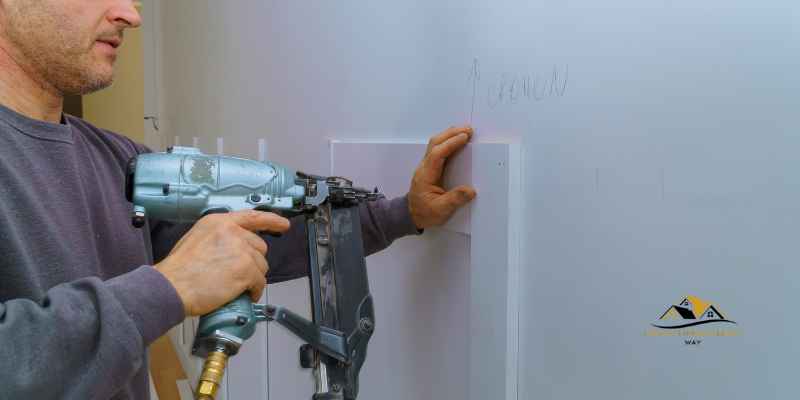
Frequently Asked Questions
What Do You Use A Straight Finish Nailer For?
A straight finish nailer is used for fastening hardwoods, MDF, moulding, wood paneling, furniture, cabinets, and stairs.
Why Are Framing Nailers Angled?
Framing nailers are angled to allow nails to be fired into tight corners and close to the floor. This angle prevents the front of the tool from hitting the workpiece, making it invaluable for certain applications. An angled nailer enables a better angle and provides tighter access compared to a straight nailer.
What Is The Best Finish Nailer For Trim?
The best finish nailer for trim is an angled finish nailer. It allows for tight corners and close-to-floor nailing, which is essential for trim work. Angled finish nailers are ideal for fastening hardwoods, thick moulding, wood paneling, building furniture, and more.
They offer more versatility than straight finish nailers.
Where Are Straight Finish Brad Nailers Most Commonly Used?
Straight finish brad nailers are commonly used for trim work, molding, securing baseboards, paneling, small woodworking projects, and light framing.
Conclusion
Discover the versatility of angled and straight finish nailers. Angled nailers offer precision in tight corners, while straight nailers provide stability. Choose based on your project needs. Experiment and find the perfect fit for your woodworking endeavors. Upgrade your tool kit with the ideal finish nailer today!

